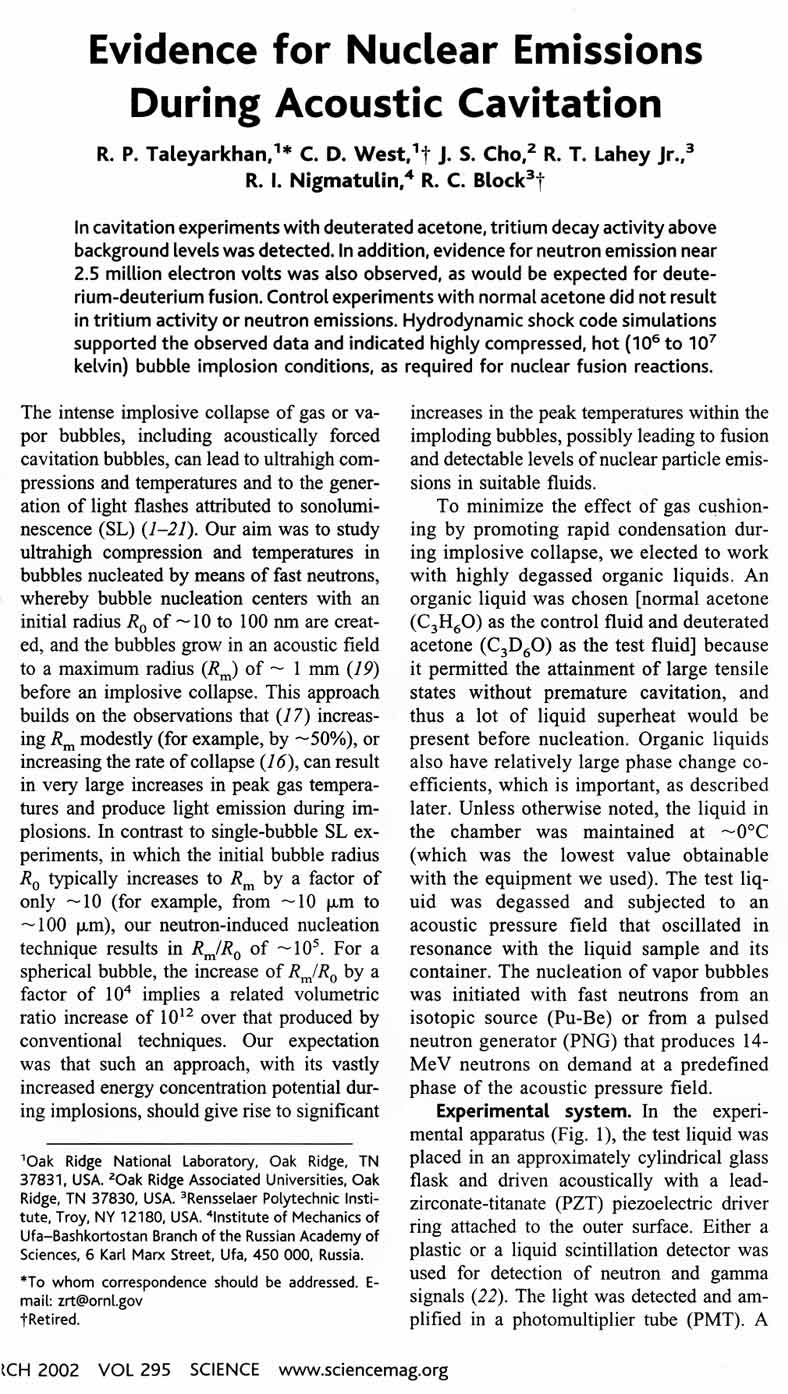

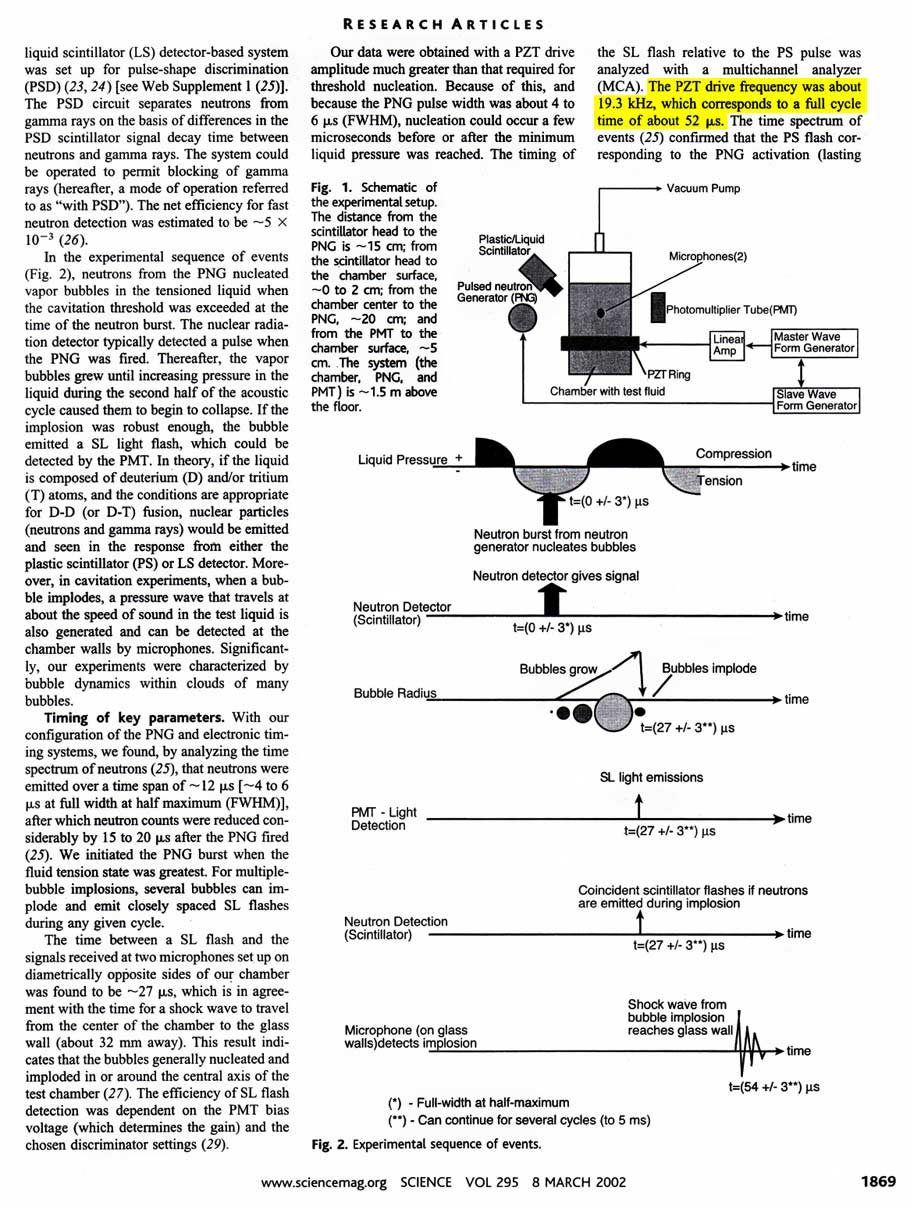
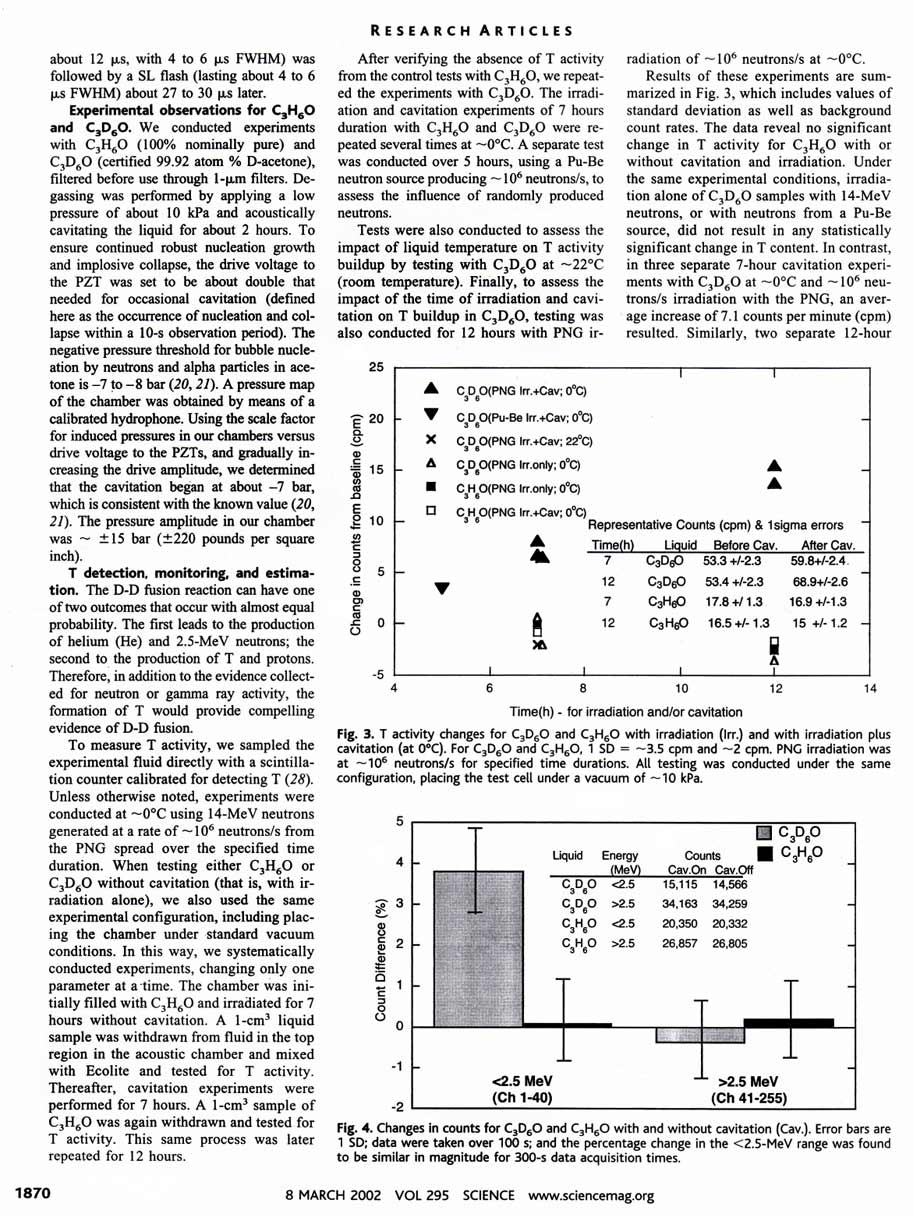
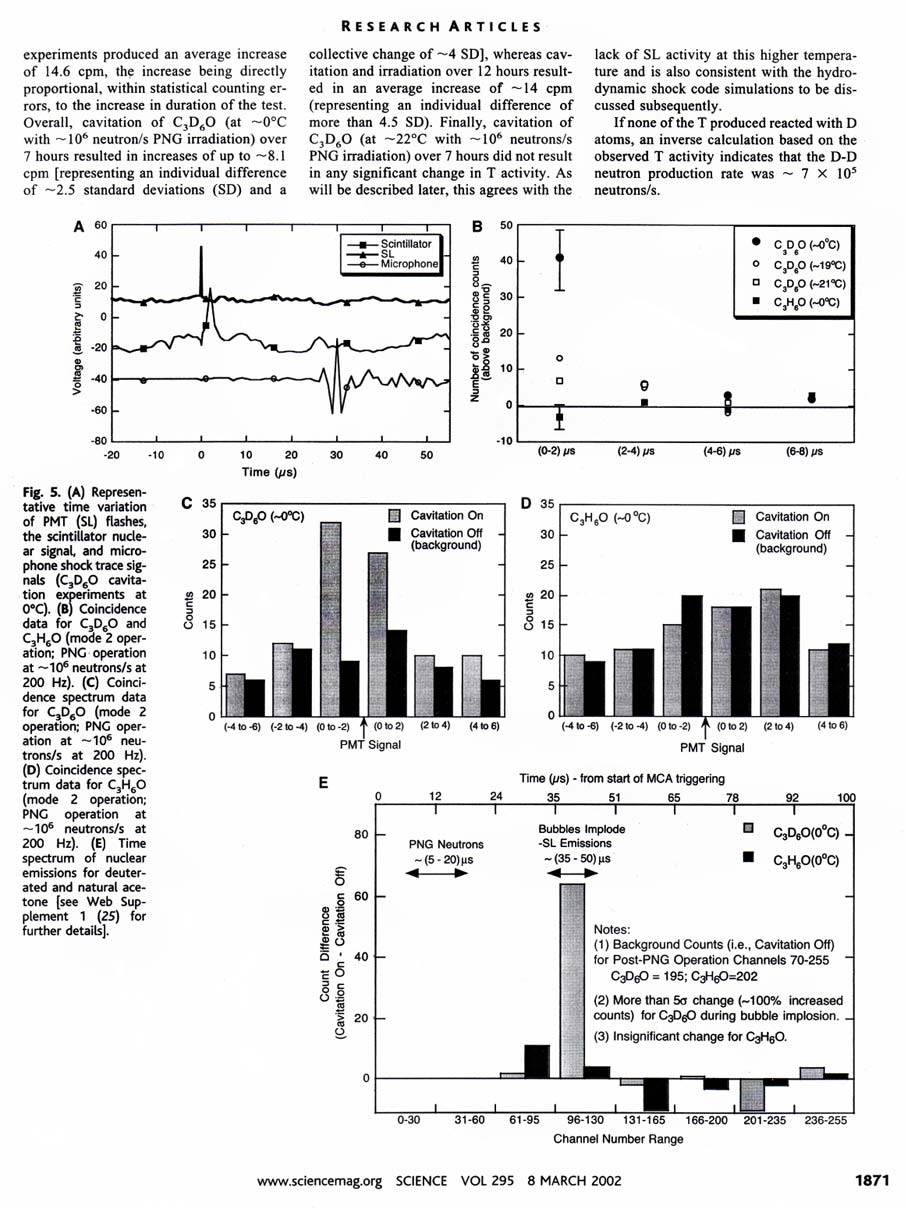
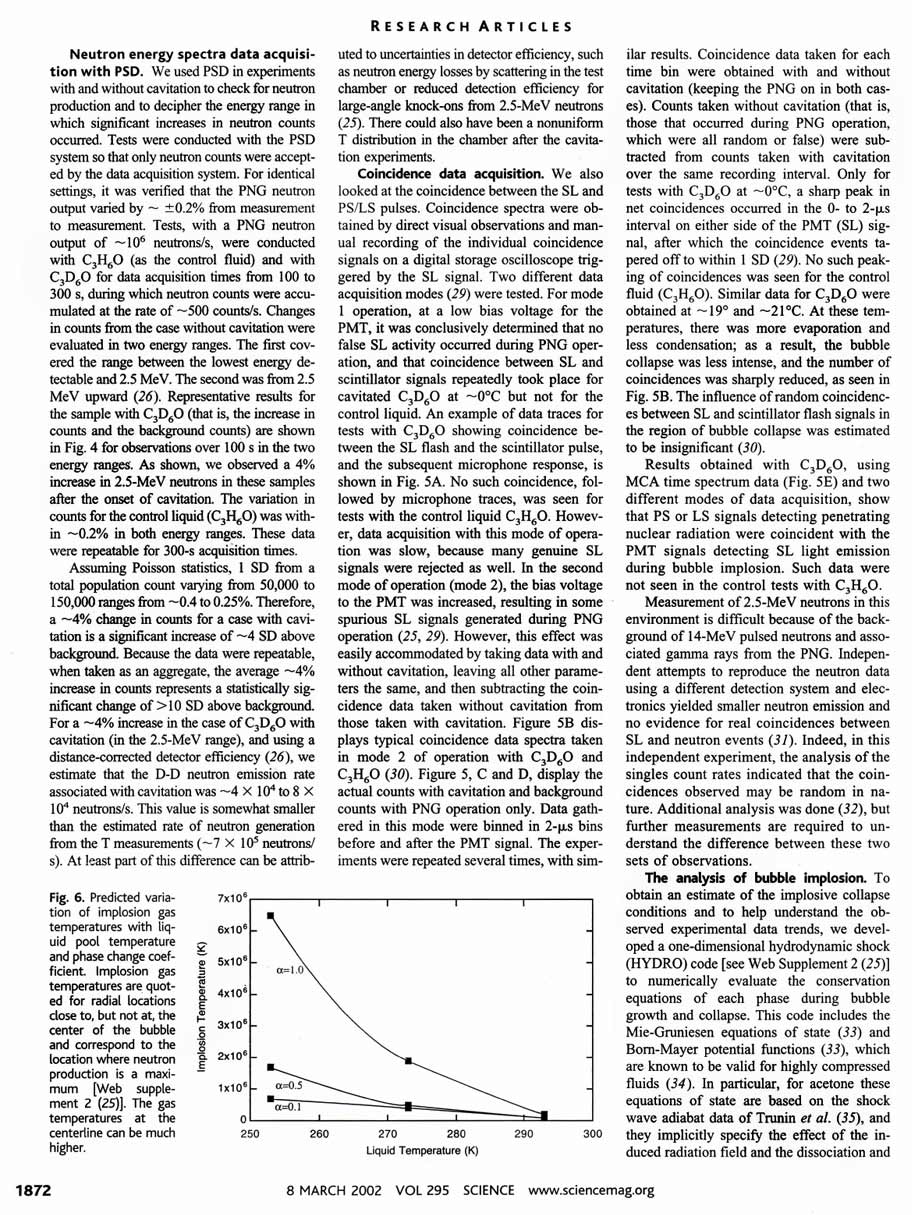
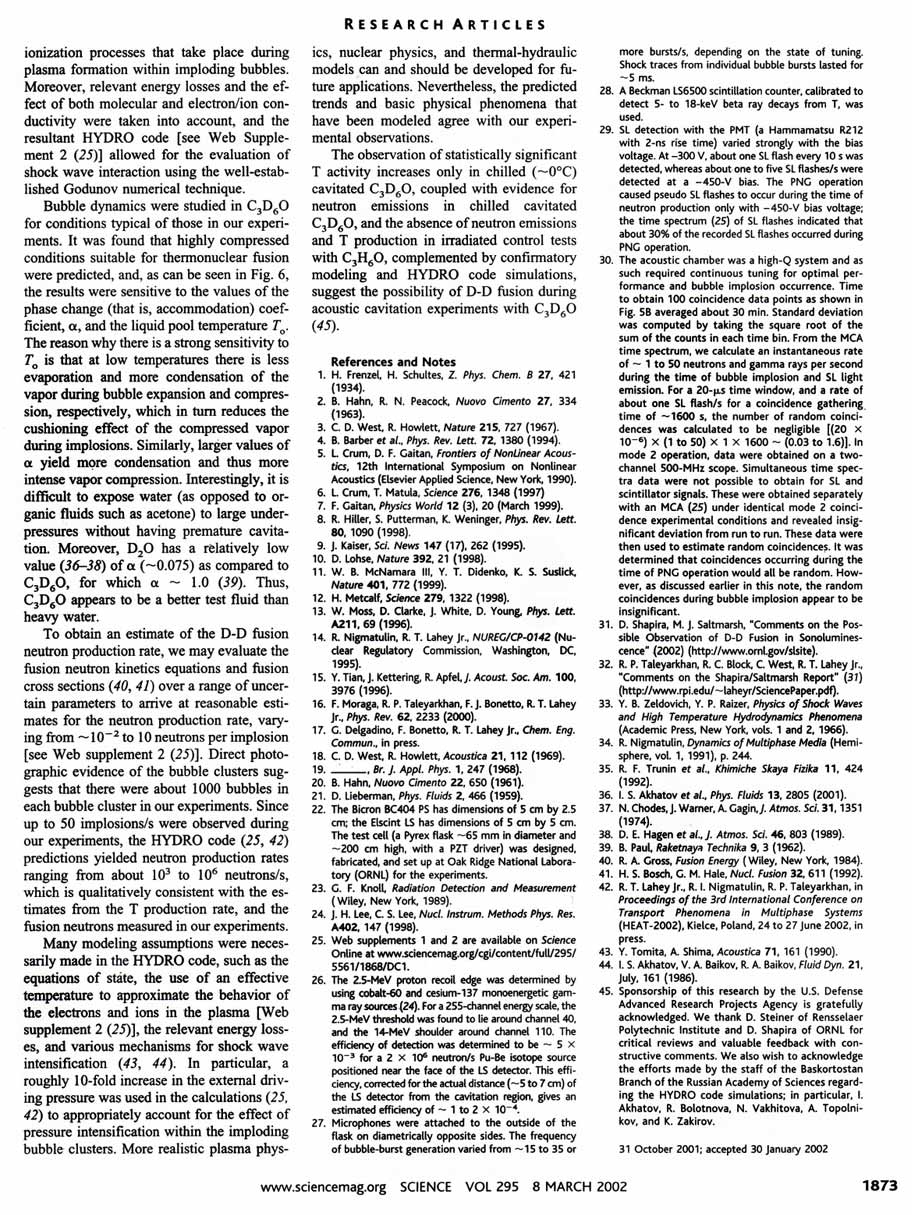
My comments to article of group of Taleyarkhan's: Evidence for Nuclear Emissions During Acoustic Cavitation.
As I already specified earlier, researchers of this international group have applied in the own experiments of the sine wave fluctuations with frequency 19.3 kHz. On previous Web page I also already did speak, what use of sine wave waves at presence of the cavitation processes can lead to occurrence quasistanding waves and to process of a self-defocusing.
Probably, the researchers from group of Taleyarkhan’s understood it also. Therefore in the own experiments they used extremely weak sine waves. I emphasize: EXTREMELY WEAK - their amplitude is small so, that without additional external influence of vigorous neutrons these acoustic waves in a phase of low pressure of liquid could not form of the cavitation bubbles even in the center of symmetry of a radiator.
And now, if we shall look on the figure from article of the group of Taleyarkhan’s, where shown the structure of amplitude of the sound waves, used in experience, then we shall see, that amplitudes in a phases of low pressure and compression are equal (symmetric) in relation to static pressure of a liquid.
Мои комментарии к статье группы Талейаркхана: Evidence for Nuclear Emissions During Acoustic Cavitation
Как я уже указывал ранее, исследователи этой интернациональной группы применили в своих опытах синусоидальные колебания с частотой 19.3 кГц. На предыдущей Web странице я также указывал,что использование синусоидальных волн при наличии кавитационных процессов может привести к возникновению квазистоячих волн и процессу саморасфокусировки.
По-видимому, это понимали и исследователи из группы Талейаркхана. Поэтому они использовали в своих опытах предельно слабые синусоидальные волны. Я подчеркиваю ПРЕДЕЛЬНО СЛАБЫЕ – их амплитуда мала настолько, что без дополнительного внешнего воздействия энергичных нейтронов эти акустические волны в фазе разряжения не могли образовать кавитационные полости даже в центре симметрии излучателя.
И теперь, если мы посмотрим рисунок из статьи группы Талейаркхана, где показан профиль амплитуды звуковых волн, используемых в опыте, то мы увидим, что амплитуды в фазе разряжения и сжатия равны (симметричны) по отношению к статическому давлению жидкости.
This figure, presented by authors of article, evidently shows us, that be small not only the amplitude of a wave in a phase of the low pressure, but also the amplitude of a wave in a phase of compression.
I.e. turns out, that researchers of group of Taleyarkhan’s put into practice the collapse of cavitation bubbles by means of the waves with primary rather small amplitude in a phase of compression! I emphasize this circumstance specially, since for certain the radiator could give much greater amplitude in a phase of compression.
One more defect of this work - uses of the neutrons, with high energy, for inception of cavitation bubbles near to the center of symmetry of a radiator in a phase of low pressure.
I specially point out, that the similar neutron activator generates the cavitation cavities no only is exact in the center of symmetry of a radiator, but also near it - i.e. the cloud of the cavitation bubbles was formed.
This cloud of the bubbles, located near to the center of symmetry of a radiator, impede an effective concentration of energy of a sound wave in a phase of compression, since it do partially screening of the cavitation bubbles, located precisely in the geometrical center of a cylindrical radiator.
In conclusion of these comments remains to add, that the drawbacks, which was made by group of Taleyarkhan’s, it will be possible to eliminate at use of the methods, described in my works.Этот рисунок, приведенный авторами статьи, наглядно показывает нам, что мала не только амплитуда волны в фазе разряжения, но и амплитуда волны в фазе сжатия.
Т.е. получается, что исследователи группы Талейаркхана осуществляли схлопывание кавитационных пузырьков волнами с изначально весьма малой амплитудой в фазе сжатия! Я подчеркиваю это обстоятельство специально, ибо наверняка излучатель мог дать гораздо большую амплитуду в фазе сжатия.
Еще один недостаток этой работы - использование высокоэнергичных нейтронов для зарождения вблизи центра симметрии излучателя кавитационных полостей в фазе разряжения.
Специально указываю, что подобный нейтронный активатор порождает кавитационные полости не только точно в центре симметрии излучателя, но и возле него – образуется облако кавитационных пузырьков.
Это облако пузырьков, расположенных вблизи центра симметрии излучателя, препятствует эффективному сосредоточению энергии звуковой волны в фазе сжатия, частично экранируя кавитационные пузырьки, расположенные точно в геометрическом центре цилиндрического излучателя.
В заключение этих комментариев остаётся добавить, что недостатки, допущенные группой Талейаркхана, вероятно, в значительной степени удастся устранить при использовании методов, описанных в моих работах.